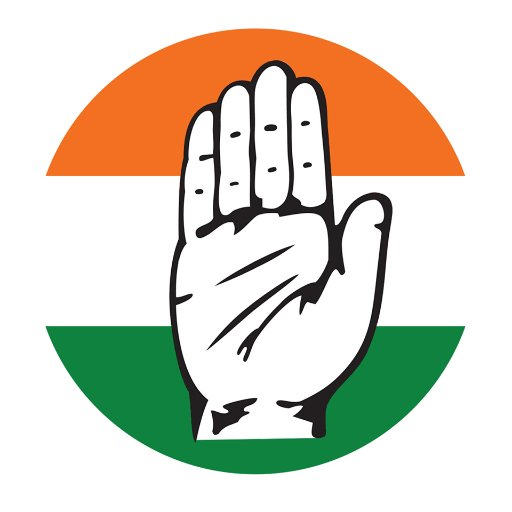Dandi March

- Dr. Anil Dutta Mishra
The launch of the Civil Disobedience Movement took place in 1930, as a consequence of resolution of the Indian National Congress, passed at its session at Lahore to seek Purna Swaraj, (complete independence) under the leadership of Pandit Jawaharlal Nehru. It was for the first time Congress had made this declaration in such an open manner. At midnight of 31 December 1930, it adopted the tricolour as national flag of India. With the declaration of Purna Swaraj, as its goal and adoption of national flag, Indian National congress geared up for a long round of struggle to seek independence. The Indian National Congress authorised the AICC to launch the Civil Disobedience Movement. It asked its member in the central and provincial legislature to resign their seats. It was a landmark decision of the Congress under the leadership of Pandit Jawaharlal Nehru and Mahatma Gandhi to demand complete independence. However, this demand alone was not going to produce an immediate result without a sustained campaign for it, which was to be launched under the leadership of Gandhi. Given the mood in the Party, it would have seemed ideal for Gandhi to launch a movement straight away, which he did not do. Instead, Gandhi retired to his Sabarmati Ashram to contemplate over the possibility of launching an agitation for creating a moral climate of non-violence that was a pre-condition. Another crucial step taken in this direction was to observe 26th January 1930 as Independence Day, for which series of meetings were organised not only in urban but also in rural areas. On all such occasions, the national flag was unfurled and proclamation for independence was made. Within a week of observing the Independence Day, Gandhi served a memorandum on the Viceroy, Lord Irwin on 31 January 1930, which did not even remotely mention the resolve to attain Purna Swaraj. This memorandum contains 11 points, of which were as follows: 1. Total prohibition, 2. Reduction of exchange ratio, 3. Reduction of land revenue by 50%, 4. Abolition of salt tax, 5. Reduction of military expenditure by fifty percent to begin with, 6. Reduction of salaries of the highest-grade service by half, 7. Protective tariff on foreign cloth. 8. Passage of the Coastal Traffic Reservation Bill, 9. Discharge of political prisoners except those condemned for murder, 10. Abolition of the C.I.D. 11. Issue of licenses to use firearms, for self-defence. Following the serving of this memorandum, Gandhi waited for a positive response from the Viceroy to these demands; however, the Government did not respond and Gandhi was left with no option but think of a strategy to launch a movement. Gandhi seriously contemplated on the issue to mobilise the masses and zeroed on ‘salt’ which was taxed by the Government and reflected on this issue imaginatively: ‘There is no article like salt outside water by taxing which the state can reach even the starving millions, the sick, the maimed and utterly helpless. The tax constitutes therefore the most inhuman poll tax ingenuity of man can devise.’ Through salt, Gandhi wanted the message of freedom struggle to be taken right into the homes of the people across classes and the masses. The choice of salt was a well-thought and cleverly well-crafted idea. Gandhi was a master strategist and have a deep sense of understanding of pulses of people. Gandhi always believes in firm and determined action. Thereafter, Gandhi addresses a letter to the Viceroy, informing him of his intention to launch an agitation on the question of salt, giving the justification for doing so; he regarded the British rule as a curse because, ‘It has impoverished the dumb millions by a system of progressive exploitation …it has reduced us politically serfdom. It has sapped the foundation of our culture… it has degraded us spiritually.’
The demand of Congress for complete independence coincided with the immediate historical circumstances to produce a heady mixture for launching a movement, which Gandhi was contemplating ever since the Congress adopted the resolution to the same effect. Gandhi proposed non-violence as a precondition for the movement and those who wished to join it. True to his conviction in Satyagraha, Gandhi did not wish to harm the enemy but to prove the point as emphatically as possible and the same lesion he was imparting to those Satyagrahis, who were to accompany Gandhi in his long march to Dandi. The Satyagrahis must not harbour any ill-will towards the adversary. While the detailed preparations for launching the movement were on, Gandhi addressed a letter to the Viceroy on 2nd March 1930, declaring his plan of launching the Salt Satyagraha which he did on 12th March 1930.Gandhi set out on a march on foot to cover the distance of 240 miles to reach Dandi, a coastal town along with 78 of his chosen Satyagrahis, who came from all parts of India and represented all sections of the society. About seventy-five thousand people had gathered at Sabarmati Ashram to wish Gandhi and his dedicated disciples and all along the route thousands gathered to greet them. Along the route, Gandhi kept on addressing the people on issues of immediate and long-term concerns such as the one of ahimsa, Satyagraha and other issues of public concern as well as country issues. Everyday at the sunrise and sunset he conducted his daily prayer meetings under the open skies, addressed meetings in villages he passed through, did his daily quota of spinning on charkha, wrote article for his journals and letters to his correspondents. The Dandi march took altogether twenty-four days to complete and throughout, the press was full of the stories about the march. The International press too keenly reporting the progress of the march and their stories were filled with the descriptions of this ‘ceremony of rebellion’. On 6 April 1930, after a night of fasting and prayer, Gandhi and his fellow marchers bathed in the sea at Dandi. Thereafter Gandhi bent down to pick up handful of salt and broke the Salt Law. It was a signal for which masses were anxiously waiting for quite some time. Wherever the sea was within reach, peasants and fishermen broke the law by making natural salt. Many people were arrested and in several cases the police resorted to lathi charge as they could. The Government started using coercive methods to suppress the movement as many leaders were being arrested, started with Pandit Jawaharlal Nehru, the President of the Indian National Congress. On April 5, 1930, Gandhi said, ‘I want world sympathy in the battle of right against might’. The moment was very successful. The Government, represented by Lord Edward Irwin, decided to negotiate with Gandhi. The Gandhi- Irwin Pact was signed on March 1931 and subsequently all political prisoners were freed.
No part of India remained untouched by the Dandi March, and virtually every aspect of the campaign elicited some public response and soon the entire nation was with Mahatma Gandhi. This Satyagraha laid foundation of the road to swaraj and the beginning of the end of British Empire not only from India but from the whole world. In fact, Dandi march was a unique and unparallel movement to connect the people of India by using non-violence as gunpower to blow the foundation of mightiest power on the earth where sun never sets. Congress again needs this type of mass movement to connect every Indian to make India more democratic, vibrant and Great under the leadership of Shri Rahul Gandhi. Further, we have to reinvent Nehru and Ambedkar and their philosophies to keep our head high to save Constitution and constitutional institutions. Congress is known for service, dedication and sacrifice for India and Indians.
The author is a renowned Gandhian scholar and author of ‘Reading Gandhi’







